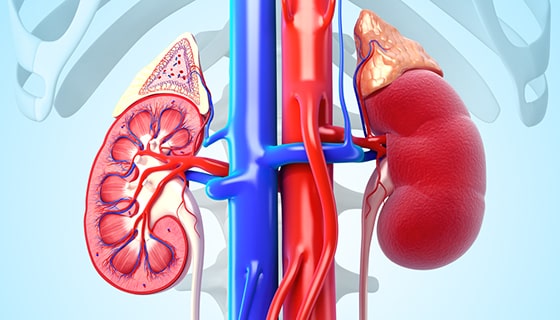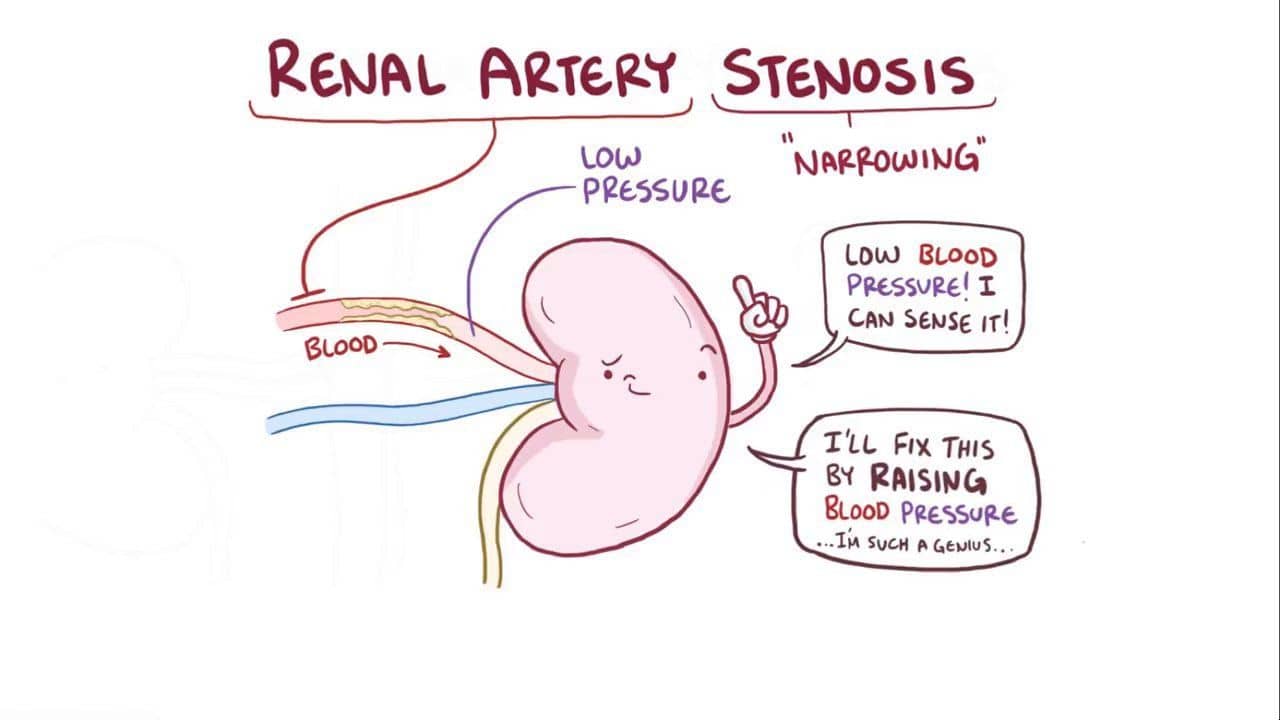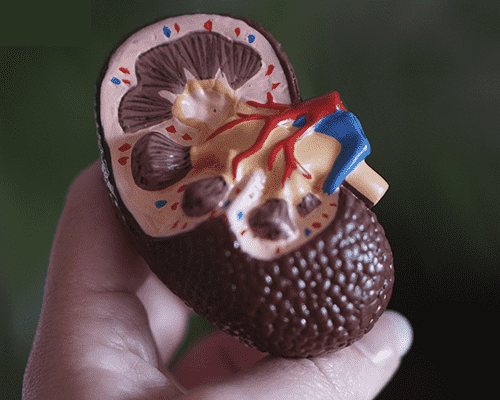WHAT IS RENAL ARTERY STENOSIS?
Renal artery stenosis is the contraction of one or more arteries that carry blood to your kidneys (renal arteries).
Contraction of the arteries prevents normal amounts of oxygen-rich blood from reaching your kidneys. Your kidneys require adequate blood flow to help filter waste products and remove excess fluids. Decreased blood flow to your kidneys might injure kidney tissue and increase blood pressure throughout your body.

RENAL ARTERY STENOSIS SYMPTOMS
Renal artery stenosis usually does not cause any signs or symptoms until it is advanced. The condition might be discovered incidentally during testing for something else. Your doctor or primary care physician might also suspect a problem if you have:
- High blood pressure that starts unexpectedly or worsens without explanation
- High blood pressure that starts before age 30 or after age 50
As renal artery stenosis progresses, other signs and symptoms might include:
- High blood pressure that is hard to control
- A whooshing sound as blood flows through a narrowed vessel (bruit), which your doctor or primary care physician hears through a
- stethoscope placed over your kidneys
- Increased protein levels in the urine or other signs of abnormal kidney function
- Deteriorating kidney function during treatment for high blood pressure
- Fluid overload and inflammation in your body’s tissues
- Treatment-resistant heart failure
WHEN TO LOOK FOR MEDICAL ADVICE
Make an appointment with your doctor or primary care physician if you have any continuous signs or symptoms that worry you.

RENAL ARTERY STENOSIS CAUSES
The 2 main causes of renal artery stenosis include:
- Build-up on kidney (renal) arteries – Fats, cholesterol, and other substances (plaque) could build up in and on your kidney artery walls (atherosclerosis). As these deposits get larger, they could harden, decrease blood flow, cause kidney scarring, and ultimately narrow the artery. Atherosclerosis happens in many regions of the body and is the most frequent cause of renal artery stenosis.
- Fibromuscular dysplasia – In fibromuscular dysplasia, the muscle in the artery wall grows abnormally, usually from childhood. The renal artery could have narrow sections alternating with wider sections, giving a bead-like appearance in pictures of the artery.
The renal artery could narrow so much that the kidney does not get an adequate supply of blood and could lead to high blood pressure at a young age. This could occur in one or both kidneys. Experts do not know what causes fibromuscular dysplasia, but the condition is more frequent in women and might be something that is present at birth (congenital).
Narrowed kidney arteries and fibromuscular dysplasia could affect other arteries in your body as well as your kidney arteries and cause complications.
Rarely, renal artery stenosis results from other conditions like inflammation of the blood vessels or a growth that develops in your abdomen and presses on your kidneys arteries.
RENAL ARTERY STENOSIS RISK FACTORS
Treatment for your sleeplessness depends on its cause. In some cases,simple lifestyle or at-home remedies changes can improve the quality of your sleep. You should avoid caffeine and alcohol for at least a few or more hours before bedtime.
Limit any daytime napping to 20 minutes or none at all if possible. Keep your bedroom cool and dark.
The majority of cases of renal artery stenosis result from narrowed kidney arteries. Risk factors that make narrowed arteries more likely in your kidneys and other sections of your body include:
- Aging
- High blood pressure
- High cholesterol
- Diabetes
- Obesity
- Smoking and other tobacco use
- A family history of early heart disease
- Lack of exercise
RENAL ARTERY STENOSIS COMPLICATIONS
Potential complications of renal artery stenosis include:
- High blood pressure
- Kidney failure, needing treatment with dialysis or a kidney transplant
- Fluid retention in your legs, causing inflamed ankles or feet
- Shortness of breath because of an unexpected build-up of fluid in the lungs

RENAL ARTERY STENOSIS DIAGNOSIS
For diagnosis of renal artery stenosis, your doctor or primary care physician might start with:
- A physical examination that includes your doctor or primary care physician listening through a stethoscope over the kidney regions for sounds that might mean the artery to your kidney is narrowed
- A review of your medical history
- Blood and urine tests to see if your kidney function is normal
- Blood and urine tests to measure the levels of hormones that control blood pressure
Imaging tests frequently done to diagnose renal artery stenosis include:
- Doppler ultrasound – High-frequency sound waves help your doctor or primary care physician see the arteries and kidneys and check their function. This procedure also helps your doctor or primary care physician find blockages in the blood vessels and measure their severity.
- Computed tomography (CT) scan – During a computed tomography (CT) scan, an X-ray machine linked to a computer creates a detailed picture that shows cross-sectional pictures of the renal arteries. You might receive a dye injection to show blood flow.
- Magnetic resonance angiography (MRA) – Magnetic resonance angiography (MRA) uses radio waves and strong magnetic fields to produce detailed 3D pictures of the renal arteries and kidneys. A dye injection into the arteries brings out the blood vessels during imaging.
- Renal arteriography – This special type of X-ray examination helps your doctor or primary care physician find the blockage in the renal arteries and sometimes open the narrowed part with a balloon and/or stent.
Before an X-ray is taken, your doctor or primary care physician injects a dye into the renal arteries through a long, thin tube (catheter) to outline the arteries and show blood flow more clearly. This test is primarily done if it is also likely that you need a small tube (stent) placed in your blood vessel to widen it.
RENAL ARTERY STENOSIS TREATMENT
Treatment for renal artery stenosis might involve lifestyle changes, medication, and a procedure to restore blood flow to the kidneys. At times a combination of treatments is the best approach. Depending on your overall health and symptoms, you might not require any certain treatment.
If you or anyone you know is suffering from renal artery stenosis, our expert providers at Specialty Care Clinics will take care of your health and help you recover.
Call 469-545-9983 to book a telehealth appointment for an at-home check-up.
